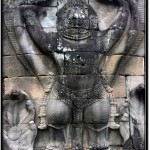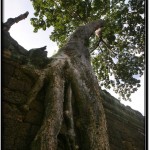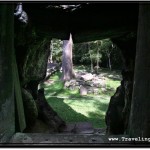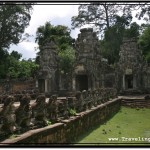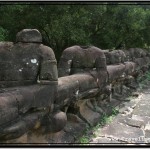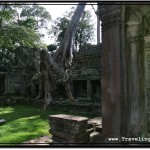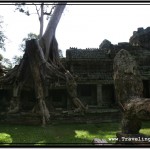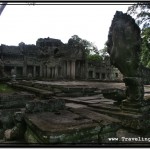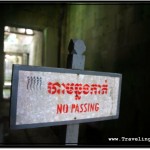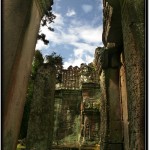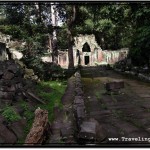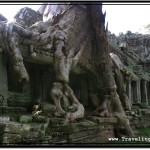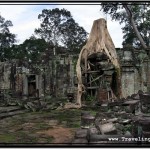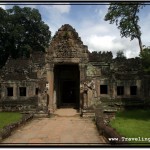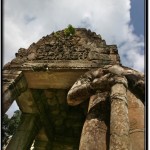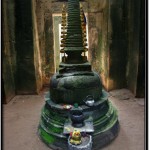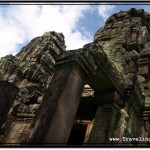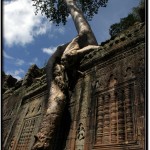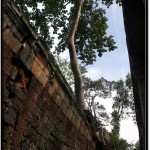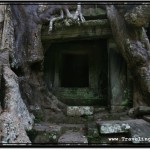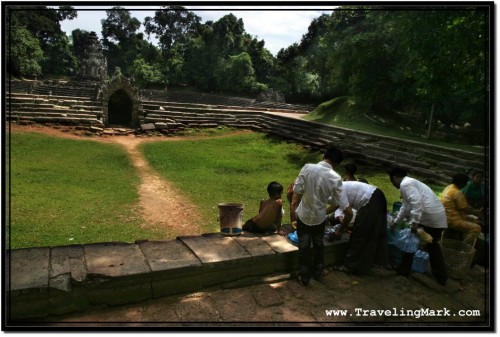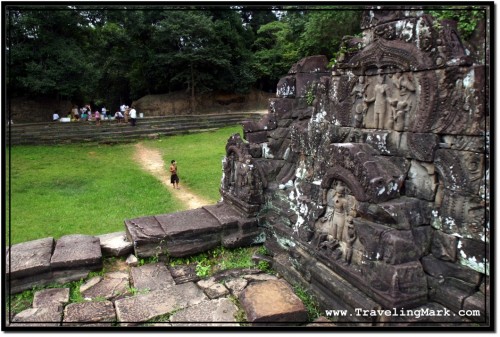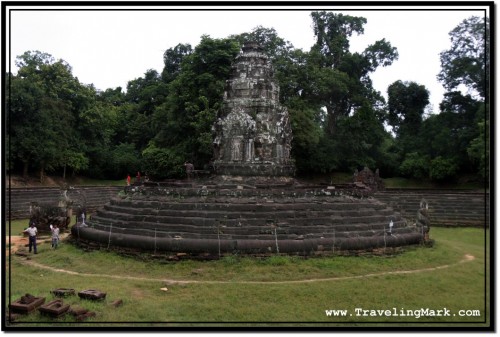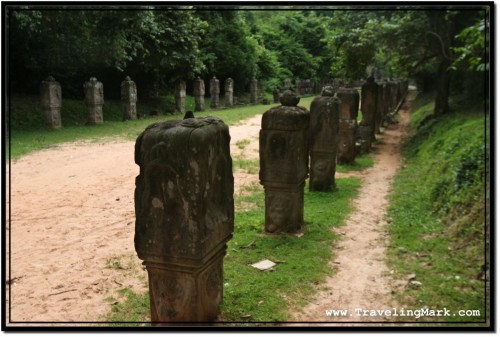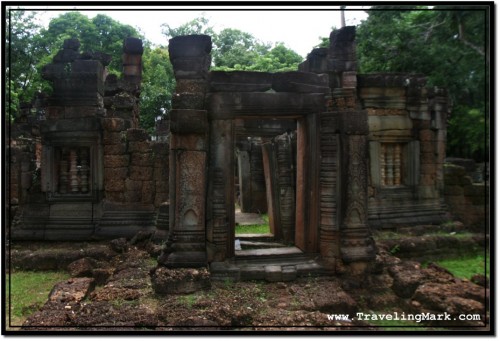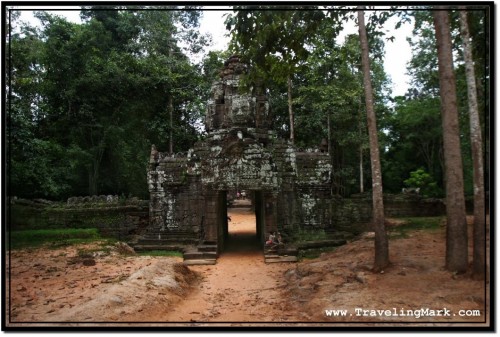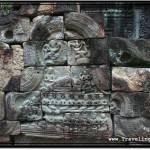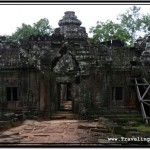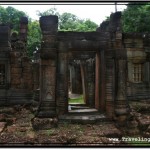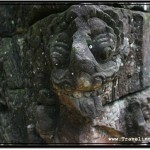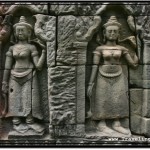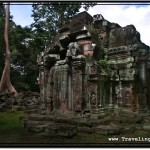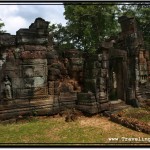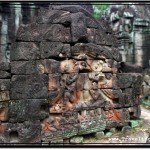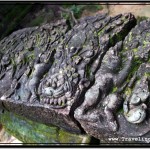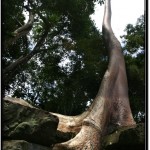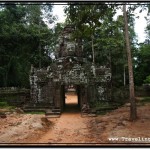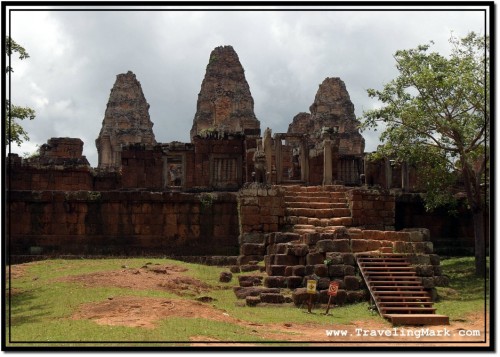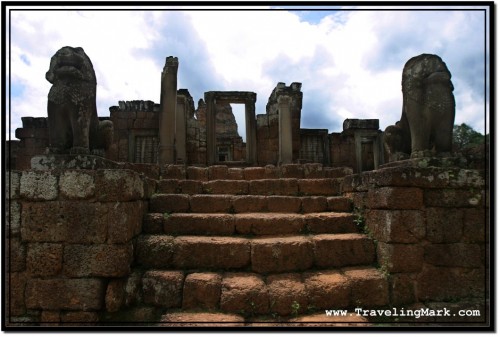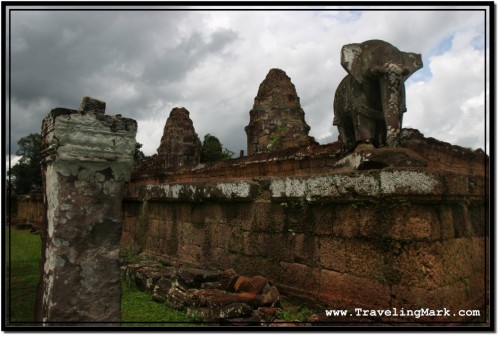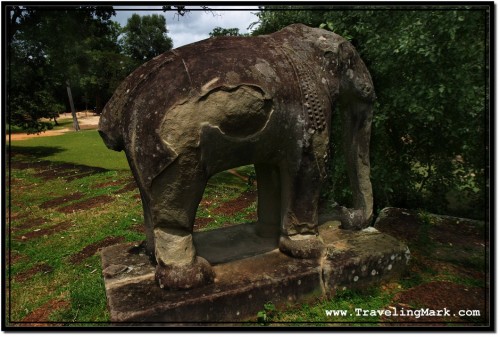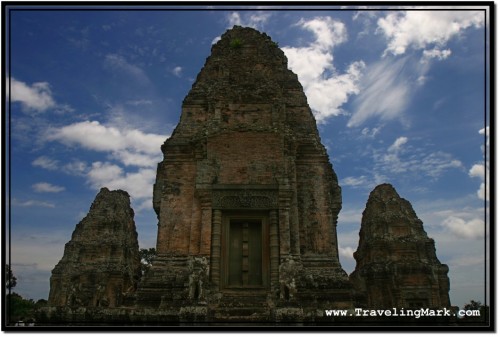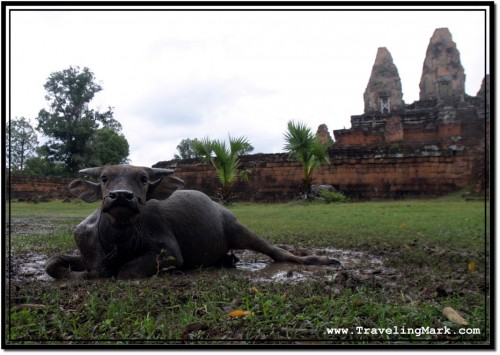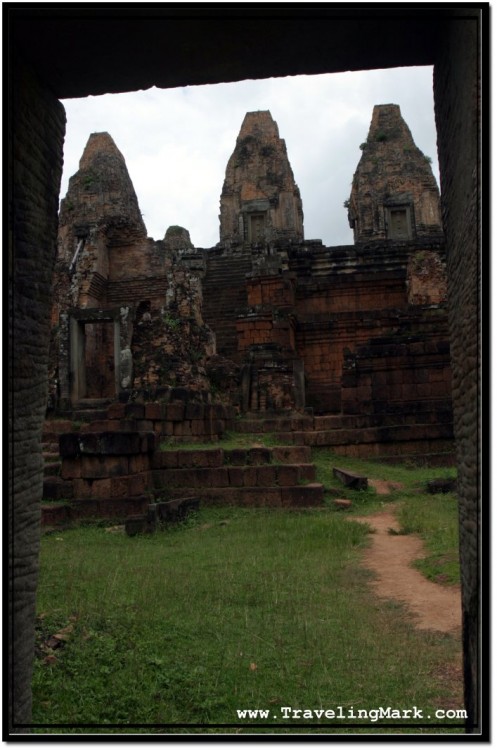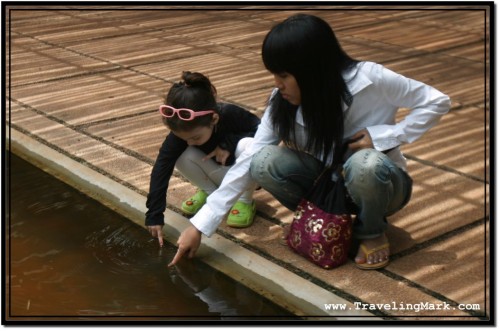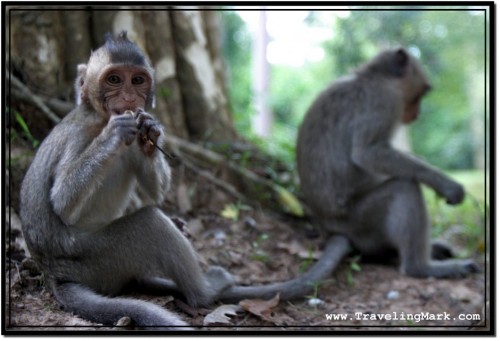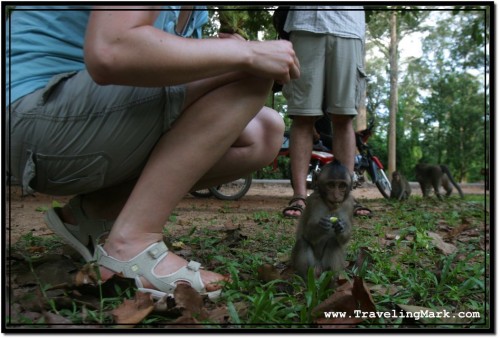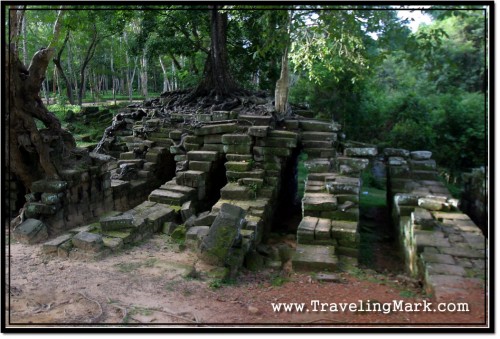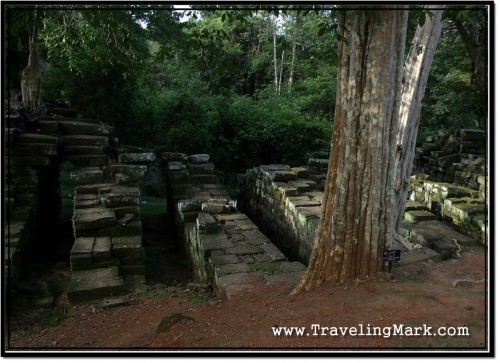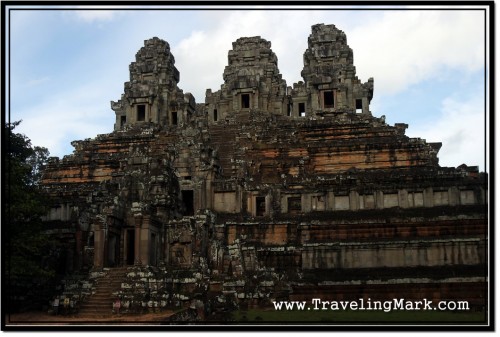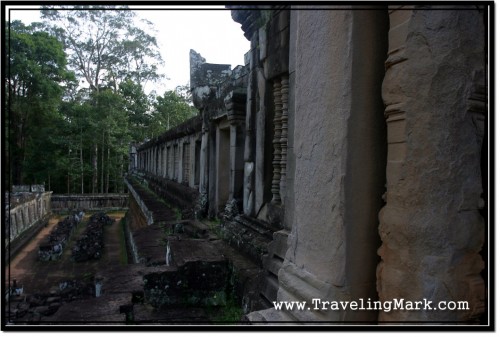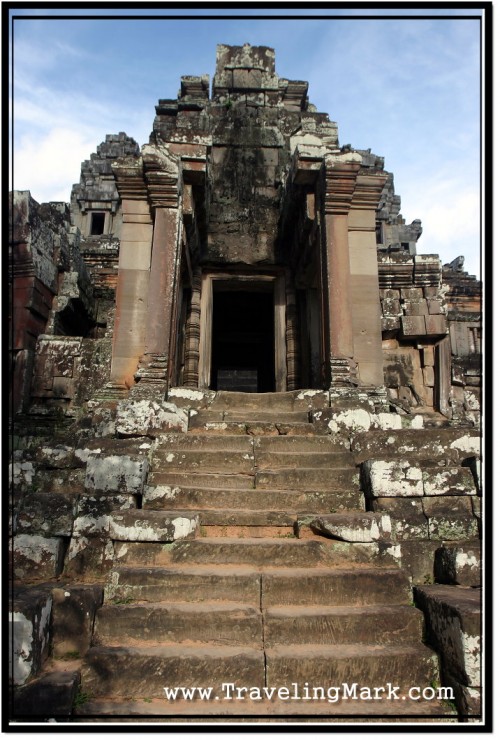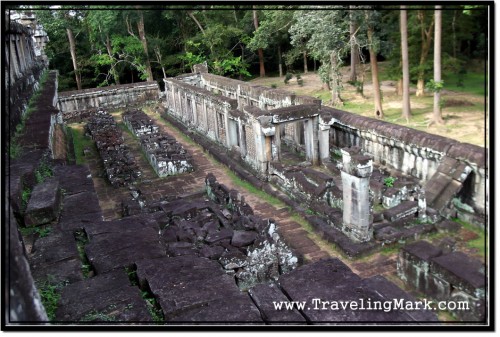A trip to the Preah Khan Temple is one of those I will never forget. This is where I had fake orphanage kids attempt to steal my bicycle and had it not been for an intervention by the divine providence, they would have succeeded. Not only would I end up without something that was rightfully mine, I would also end up stuck without transportation at the part of the Grand Circuit that just happens to be the furthest from Siem Reap. And that is not a very positive outlook in a country like Cambodia. I would have to rent services of a tuk tuk driver who, seeing that I was just a subject to crime, would take advantage of the situation for his own personal enrichment. For Cambodians, a person in need is not a person to whom to assist. For Cambodians, a person in need is a person easier to exploit because they are out of the options and cannot be choosers.
Luckily for me, in the nick of time I got that funny feeling that I should repark my bike somewhere where it would be more difficult to steal so I interrupted my visit to Preah Khan only to catch the fake orphanage kids to whom I previously donated money thinking that they would gratefully watch over my bike in return, dashing off carrying my bicycle with them. My untimely show-up with a follow up yell from hell made them drop the bike on the spot and run for their lives. It was hot and I was tired from whole day exposure to that devastating Cambodian sun, but when the feeling of uneasiness about the insecurely parked bike came upon me, I interrupted my visit to the temple thinking that I would return to finish the exploration after I had my bike reparked and locked against something unmovable.
Needless to say, the distress the discovery of the theft attempt caused made the return to Preah Khan a no option. I counted my blessings and feeling happy I still had my bicycle, I rode off, away from this God-forbidden place where some of the most horrible inhabitants of the Earth operate as the lowest form of scum imaginable. However, because I was only partially done exploring Preah Khan when I left to repark my bicycle, I don’t have pictures of all of it. The gallery below contains the images I did take, however I left some for after the repark, which I ultimately ended up not having a chance to capture. Those include a picture of that unique two storey stand alone building with circular columns – something very unique for Angkor Archaeological Park as nothing of sorts can be seen anywhere else within the area. And it also includes the missing picture of the central sanctuary itself.
Now to the gallery of photos of the Preah Khan temple:
The entrance causeway is lined on both sides with the same row of Asuras carrying a body of a huge naga serpent that can be found at the South Gate to Angkor Thom, however all Asuras at the Preah Khan Temple are headless. Locals stole the heads during their looting raids and sold them to rich foreigners who yearned to have a historically significant rock in their possession. Some speculate that presence of these Asuras at the entrance to the temple makes Preah Khan more significant than Banteai Kdei or Ta Prohm, both of which receive incomparably more visitor traffic (mostly because they are on the Small Tour).
As for the pictures with those giant trees growing over the structures – because the passages immediately below the trees are crumbling and no way has been found to secure them yet, the access to these parts is restricted by the warning signs (as you can see from one of the photo in the gallery). However there is no one enforcing the no access requirement so a visitor to Angkor with a death wish can freely proceed and stand right below the crumbling rocks on top of which a monster tree is growing ever so tall. I had to be one of the crazy ones. I just could not pass up on this opportunity to stand right below those enormous trees knowing that the piles of huge rocks that support them could come crushing down at any given time. Utmost stupidity and I was fully aware of it at the time, yet still I wanted to stick my head where the danger was. It was my time at Angkor, afterall. For me it was a one in a lifetime opportunity to stand below those famous silk trees that brace the stones of Angkor in substitute for pillars in a frisk of nature that is as astounding as it is precarious. It was this close knit of nature with ancient architecture that drove me to Angkor in the first place.
Anyway, without further ado, below is the gallery of photos of the Preah Khan temple I took before the attempt to steal my bicycle by the fake orphanage kids took place. The few spots I left for after the bicycle repark I never eventually got a chance to photograph as I could not comfortably walk inside the temple outside of which an organized group of large caliber crooks operated without backbone of any form:
